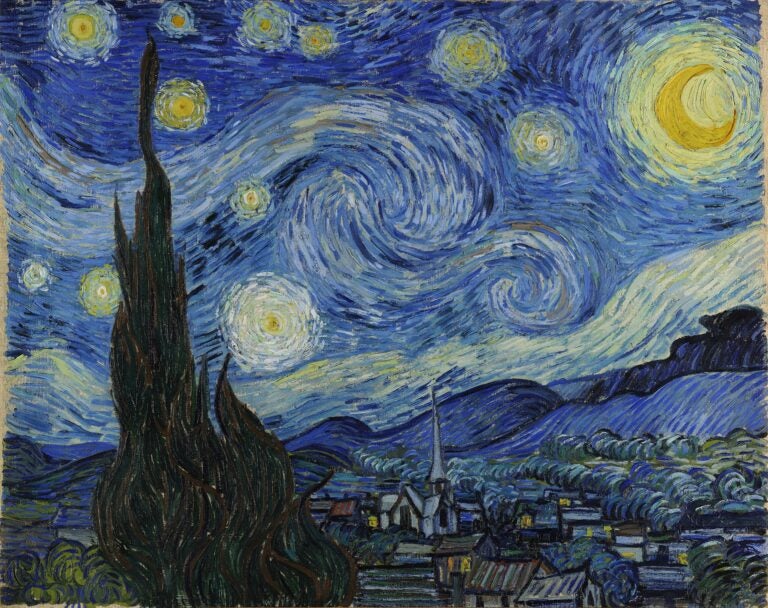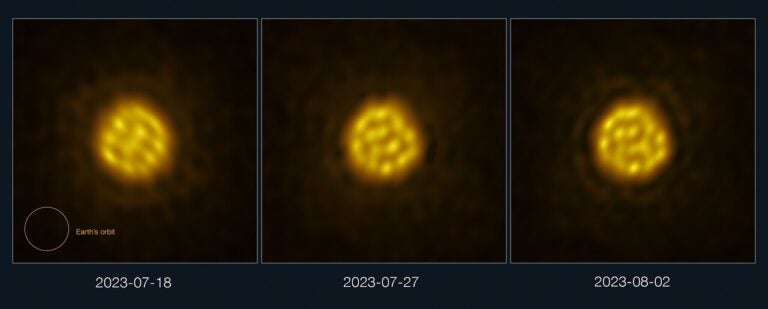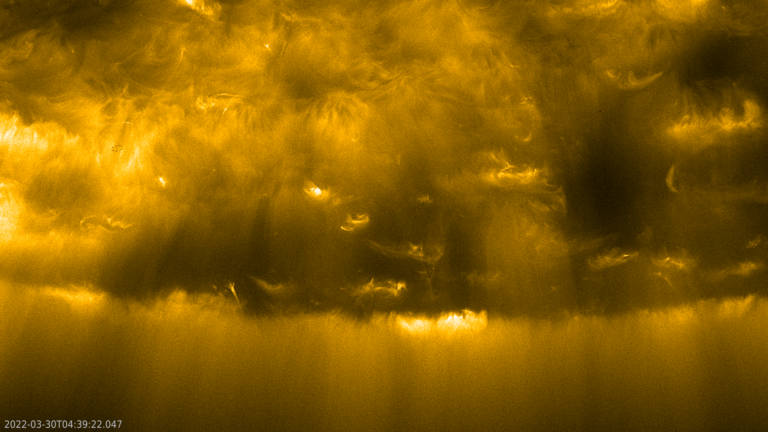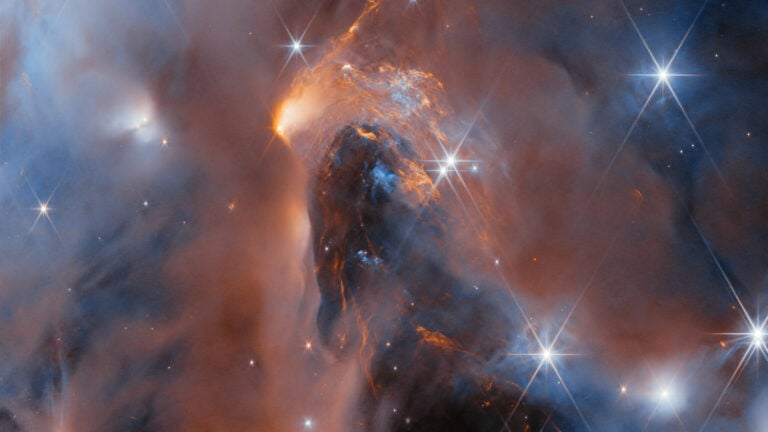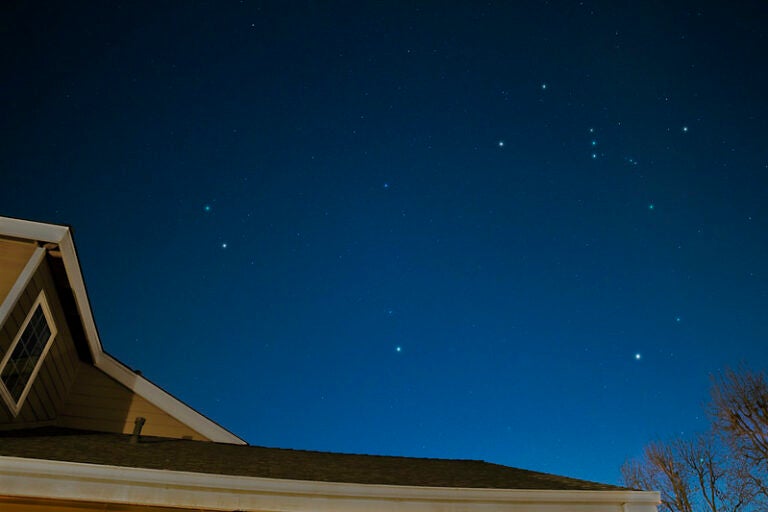Look inside the Crab’s body with your binoculars, and you’ll notice it frames a swarm of fainter stars — the Beehive Cluster (M44). One of history’s first published deep-sky observers, the Greek philosopher Aratos, discovered this cluster in 260 B.C. He described it in his poem Phainomaina (Heavenly phenomena) as “a little mist.” Since then, countless generations of night-sky fanatics have enjoyed M44.
Whenever I look at the Beehive through my 10×50 binoculars, I see the cluster shaped like a right triangle. Of the 36 cluster stars I can count, most shine between magnitudes 7 and 9. Many form interesting pairs or patterns.
For instance — maybe because it’s the start of baseball season — I see M44’s five brightest stars grouped as a home plate just south of the cluster’s center. A closer look at the star marking the plate’s pointy tip reveals it as a triangle of stars. Multiple-star fans know this group as Burnham 584. Before you try to spot the three stars, brace your binoculars. A second conspicuous pairing of stars also stands out just north of the cluster’s center.
Saturn passed M44 last September, just skirting the cluster’s southern edge. As autumn faded into winter, Saturn continued its slow, easterly motion away from the Beehive. But then, Earth passed Saturn during our planet’s annual trip around the Sun.
As Earth passed the ringed planet, Saturn appeared to slow down in our sky and reverse its easterly motion. It passed just south of M44 again 2 months ago, when the planet shone brightly as the hive’s queen bee. As April opens, Saturn lies west of the cluster once again.
To find Cancer’s second cluster, trace its southeastern leg away from the Crab’s trapezoidal body to the 4th-magnitude star Acubens (from the Latin for “claw”). Center your view on Acubens, then shift your attention to the binocular field’s western half. You should spot the dim glow of M67. You might even pick out a few faint stars shining within M67’s haze.
Like M44, M67 is an open cluster, although its stars tell a different story. While stars in the Beehive are believed to be about 400 million years old, those in M67 date back 3 to 4 billion years. This makes M67 one of the oldest open clusters in the Milky Way and nearly as old as our solar system.
Let’s close this month with a two-part Saturn challenge. Although a telescope works best for looking at the planet’s spectacular rings, binoculars also can spot the rings’ oblong bulge. I imagine Saturn as slightly elliptical through my 10x50s, but how about you? How low can you look and still tell that Saturn is oval? That’s the first challenge.
The second challenge: Try to find Saturn’s largest moon, Titan. Look for a dim, 8th-magnitude speck just beyond the planet. Give both a try, then drop me a line here to let me know how you make out.
Until then, don’t forget: Two eyes are better than one!

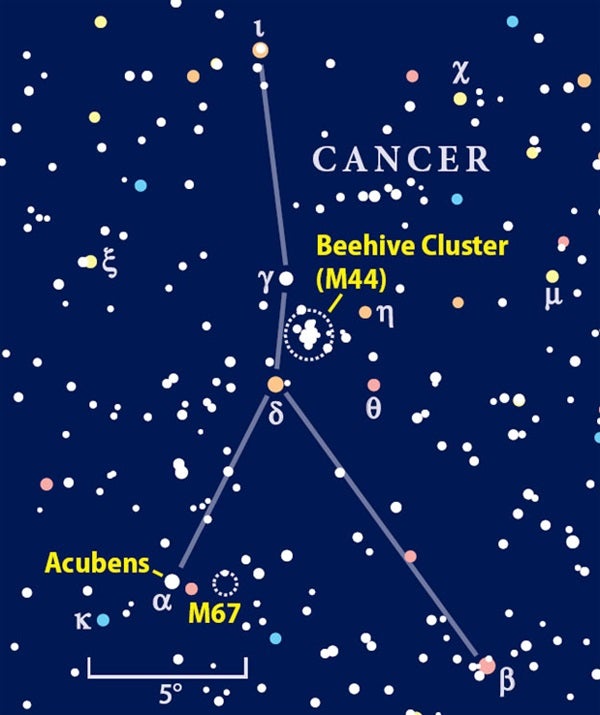

![Albireo (Beta [β] Cygni) is a classic example of a double star with contrasting colors.](https://www.astronomy.com/uploads/2024/08/Albireo.jpg)
